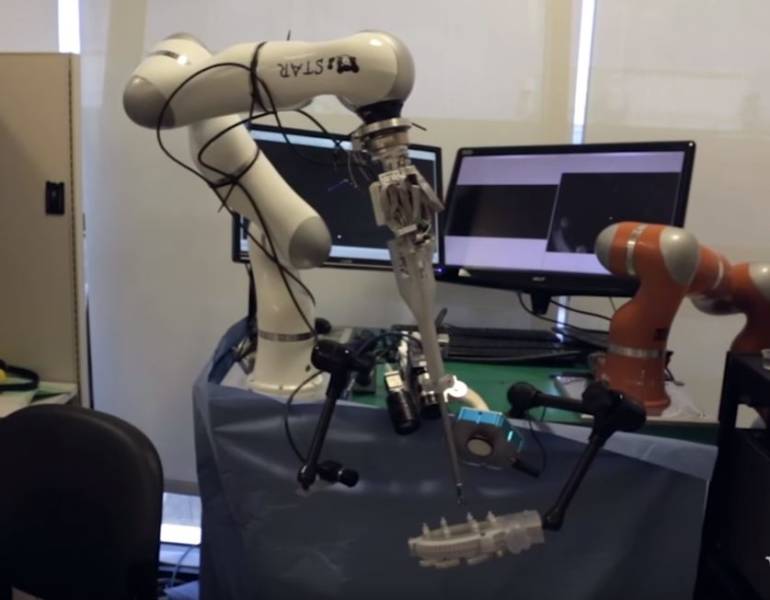Boy, here are three words you don't often see together:
Autonomous. Robot. Surgery.
Some think it could be coming our way -- at some point. The possibility came closer to reality after the Smart Tissue Autonomous Robot, or STAR, performed a suture on a pig's bowel, as documented in a paper published in Science Translational Medicine.
"Despite dynamic scene changes and tissue movement during surgery, we demonstrate that the outcome of supervised autonomous procedures is superior to surgery performed by expert surgeons ..." the paper says. "These results demonstrate the potential for autonomous robots to improve the efficacy, consistency, functional outcome, and accessibility of surgical techniques."
Here's a video report on SMART from The Wall Street Journal:

